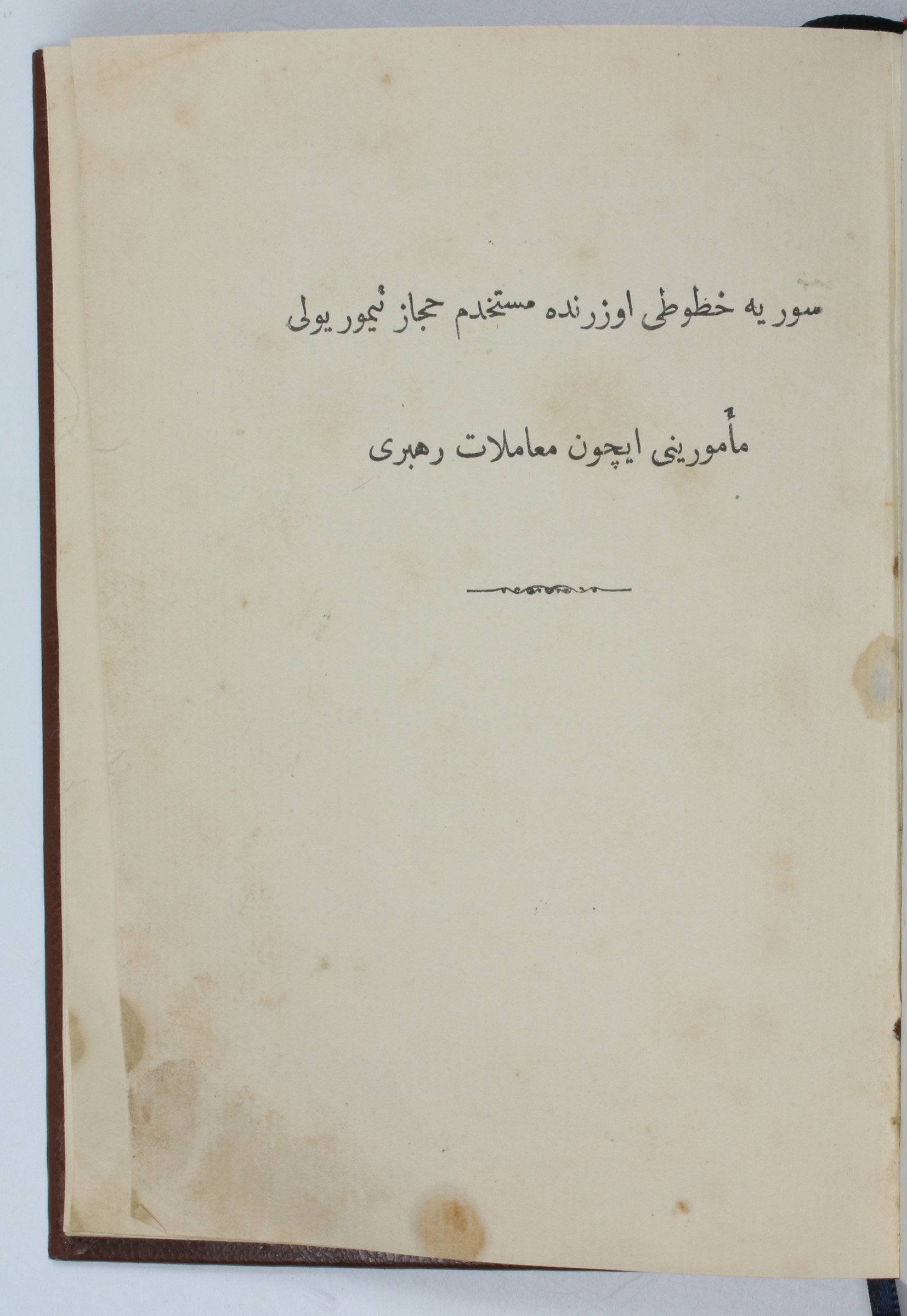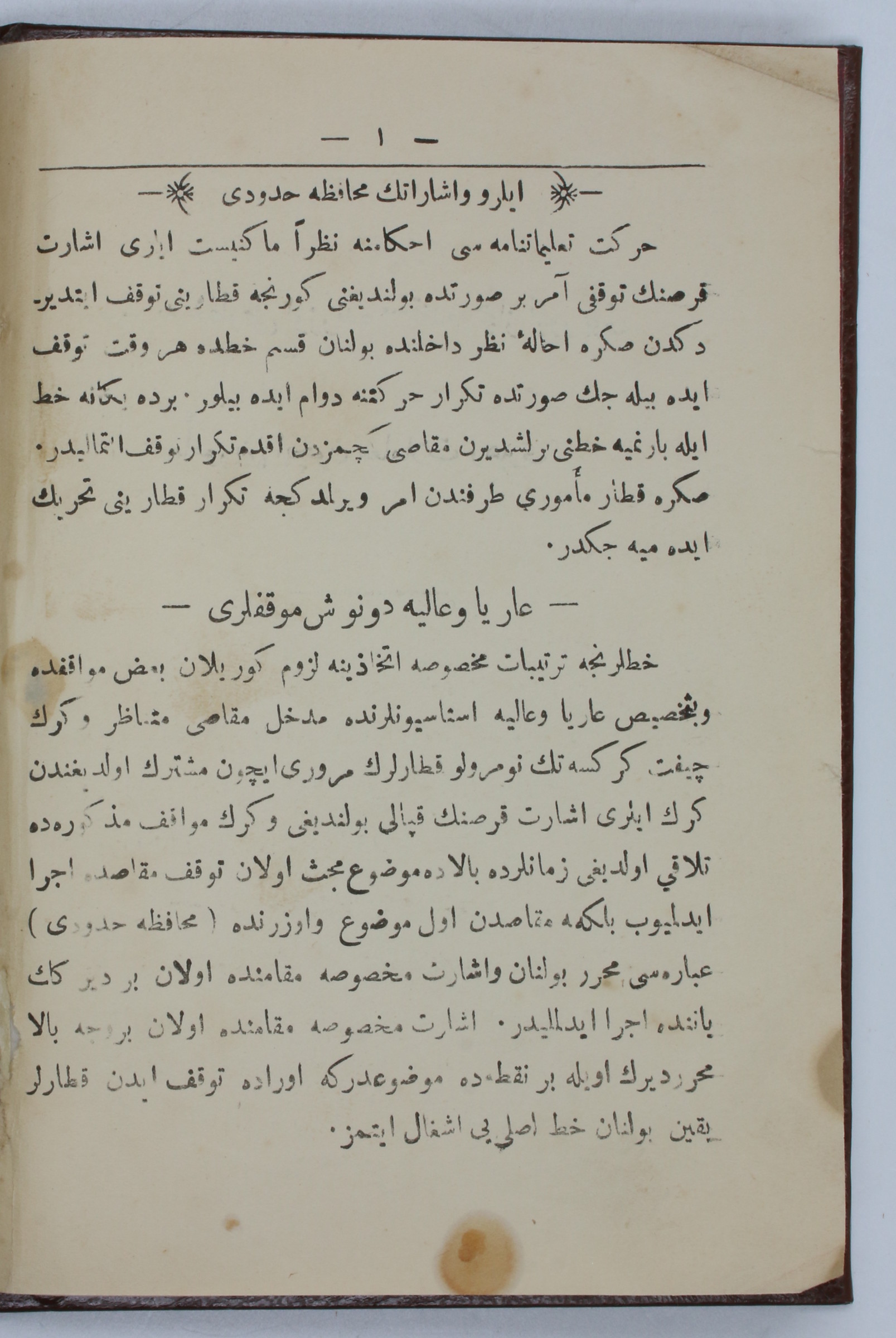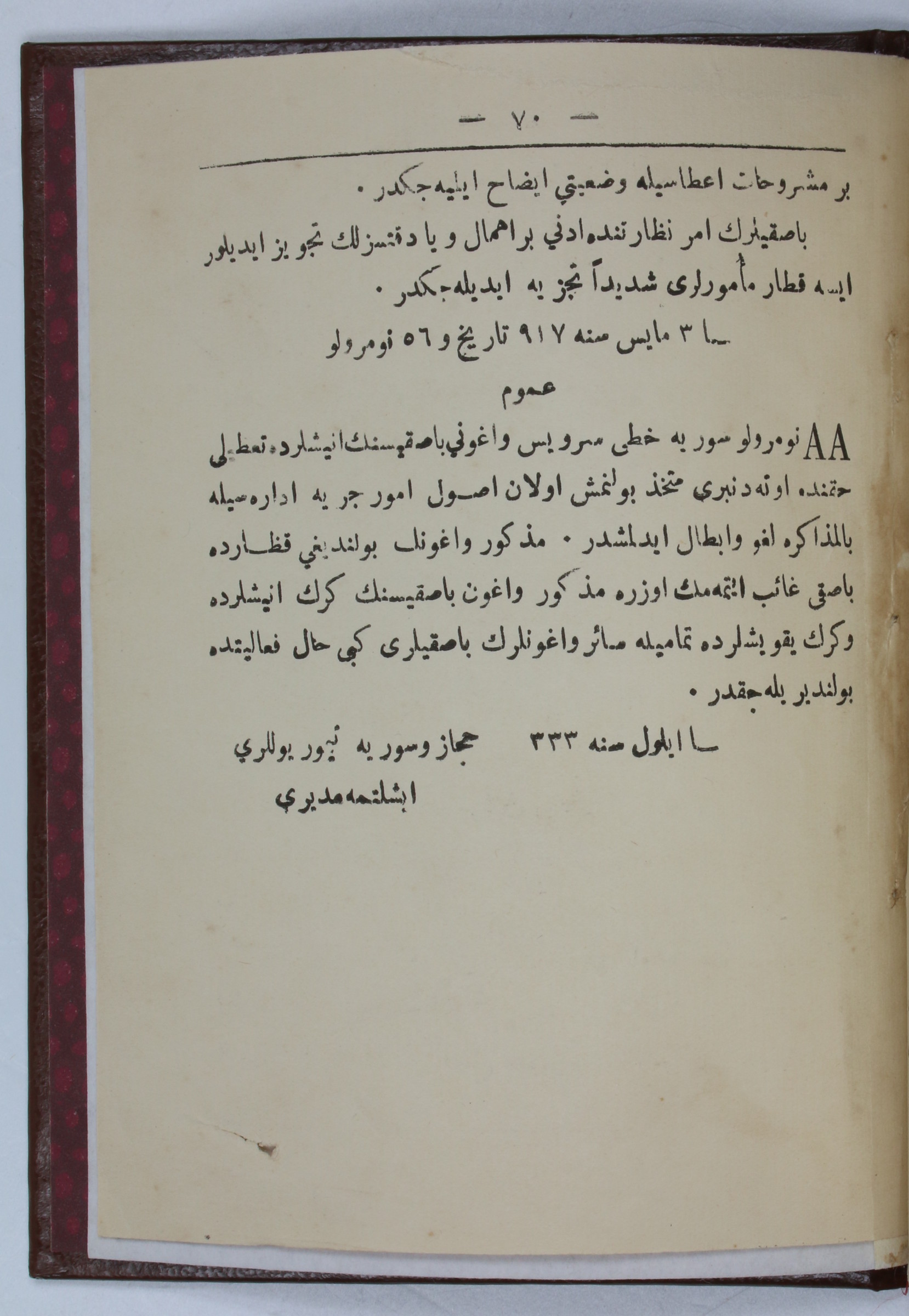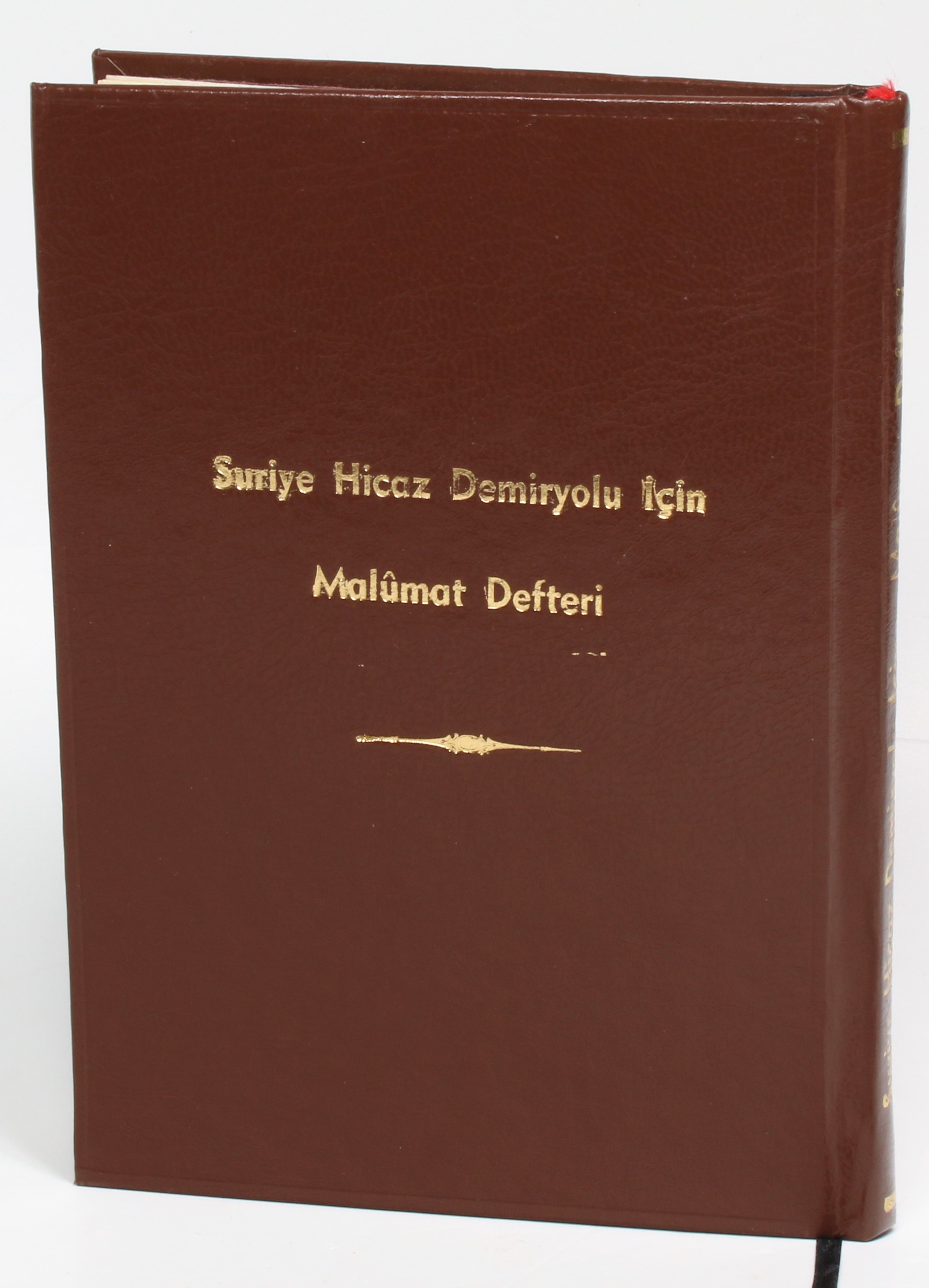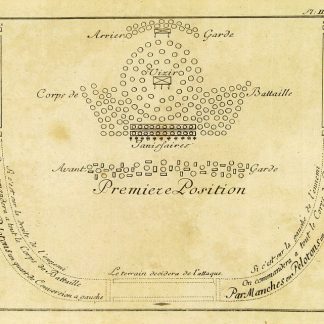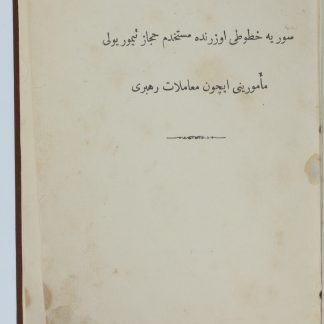Unrecorded official user manual for employees on the Hejaz Railway
Suriye hicaz demiryolu için malûmat defteri [Information book for the Syrian Hejaz railway].
8vo (125 x 172 mm). (1), 70, (1) pp. Modern brown library leather with title gilt to spine and upper cover. Coloured endpapers.
€ 12,500.00
Official Hejaz railway user manual for employees on the railway's Syrian section: a rare survival that provides a missing piece of the story of the Hejaz railway during the Arab Revolt led by Lawrence of Arabia.
The Hejaz railway ran from Damascus to Medina with a branch line to Haifa. This is an official Ottoman guidebook, issued for railway officials, that includes regulations on the wagons, food supply, changes on the lines (especially for important crossings), descriptions of types of trains, and also instructions for the use of telephone and telegraph lines with various codes. It covers the northern section which passes through today's Syria, Lebanon and Jordan.
The last printed documents inside the pamphlet are dated September 1917, suggesting a publication date in very late 1917 or early the next year. By March 1917 the Arab Revolt was in full flow, and the railway was subject to more sustained and sophisticated attacks, many of which were plotted by T. E. Lawrence. Recognising the importance of stopping the Ottomans from reinforcing their front-line in Palestine, Lawrence deterred the Arab rebels from trying to take Medina and "proposed a series of pin-prick attacks along the length of the railway" (Nicholson, The Hejaz Railway, p. 104). He wanted to keep the line running, "but only just" (Lawrence, Seven Pillars of Wisdom, p. 225) - drawing in Ottoman reinforcements and sapping the Empire's resources. The ensuing raids and bombings accomplished this aim, making the line almost inoperable. Nevertheless, the Ottomans showed remarkable defensive resolve to keep the line running right up to the collapse of their Northern armies in 1918 (they also managed to hold on to Medina until January 1919). From then on, the possibility of maintaining and extending the southern half of the main line was lost, and it was unofficially shut down in 1920.
Likely issued in very small numbers for restricted circulation during the war and apparently unrecorded.
Not in Özege. Not in OCLC, KVK etc.

